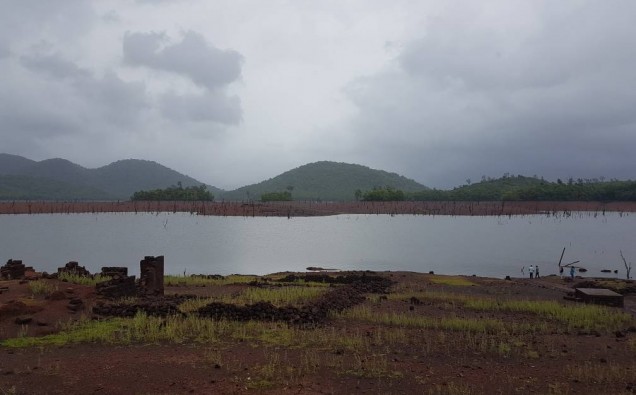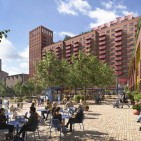Curdi which is located in the Western part of Goa between two hills with a river Salulim running through it is visible only for a month. Yes, you heard that right! The village remains visible for a month and disappears under water for the remaining eleven months. After the water goes down, the residents of the village come back to live there. The rest of the eleven months, they live somewhere else.
According to the villagers, Curdi was once a thriving place. However, in the year 1986, the village ceased to exist for the villagers. The first Dam of Goa was constructed and as a result of that, Curdi was completely sunk under water. But in the month of May, the water goes recedes and the village comes back again.
After the water goes back, what remains are cracks in the field, tree stumps, eroded houses, ruined water canals, barren land and so on. However, it must be noted that the land used to be very fertile before this incident happened. The population of about three thousand people lived by cultivating the lands which were surrounded by jackfruit, mango and cashew trees.
Another important aspect of the village was that many people from different religious communities lived together. One can find a Temple, a few smaller shrines, a Muslim place of worship and also a Chapel in the village. After the water recedes, the Christian community comes together for an annual Chapel feast and the Hindus organise a Temple feast during that month. A perfect example of religious harmony for sure!
One will also be amazed to know that Curdi is the birthplace of eminent classical singer Mogubai Kurdikar.
After Goa was liberated from the clutches of the Portuguese in the year 1961, several changes happened in the village. Dayanand Bandodkar, who was the first Chief Minister of Goa visited the village and spoke about the dam and how it would benefit the villagers. Six hundred families were forcibly relocated to other villages. However, they were given land and compensation for their sacrifice.
The dam was built on the Salaulim River and was named as the Salaulim Irrigation Project. The main aim of the Dam was to give water for irrigation, industrial and drinking purposes to people in South Goa. An estimated 400 million litres of water was to be provided to the people per day.
However, the tragedy is that the water from the project never reached the villages where the residents of Curdi were relocated. The tap system did not go to all the villages as was promised.
The people who went to other villages face water problems in the summer. They then have to depend on government tankers which provide them with water.
Relocation is very common in recent times. But that is not so for the people of Curdi who come to visit their lost homeland when the water goes down. Curdi was a part of their identity and they were so closely knit. Hence, they go back to Curdi again and again.
Priyanka Dutta


















